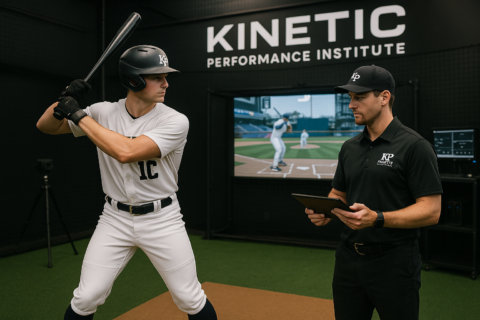Using Recovery For Performance Enhancement
As science has improved and modern coaching methods are implemented across the baseball and softball landscape, many new areas of research have driven new frontiers in player development. The modern player has access to very advanced modalities that cover many areas of their performance. One area that has been overlooked, and might be the most important of them all, is the recovery phase of player development. Many think of recovery as an after thought and not an active part of a player development plan, but recovery should and can be integrated into advanced programming and be a driver in player development.
When looking at recovery, the basics have to be established before a player can really look at recovery and how it affects player performance. Those basics are sleep and nutrition. The teenage athlete is going through an incredible amount of physical and mental stages that are extremely taxing on the body. Sleep needs to be prioritized. Not only should teenage athletes be sleeping 7-8 hours a day, they should try to surpass that and sleep 8-10 hours at a time. This will allow the body the opportunity to recover from all the stressors that comes with puberty, training like a high level athlete, school, and all of the normal social stressors placed on teenagers. Next is nutrition. The caloric intake for most young athletes should be very high. Their normal ability to burn through calories will usually be high at their age, but then adding high level training means that young athletes must receive a large amount of calories to ensure their body performs at optimal levels. Proper nutrition ensures proper metabolic and the soft tissue in the body is constantly replenished and recovery can take place. Without these basics in place, young athletes are taking large risks that their bodies will hold up to the high demands placed on it. It is difficult for coaches to implement more nuanced recovery modalities if an athlete is not sleeping and eating properly, because those basics matter the most.
When thinking about recovery for baseball and softball players, most automatically consider arm care first and foremost. We will start there as we look at how to actively implement recovery into player development. Arm care is an extremely nuanced issue we have written about extensively, so we will just focus on active recovery. First, most soft tissue injuries are a result of the tissue being overstressed. We want to gradually stress soft tissue so it can safely respond, recover, and then get stronger during that process. When soft tissue is overly stressed and does not have time to recover, it tears. So proper rest after stressful throwing is key to proper arm care and recovery. We do not allow pitchers to pitch on back to back days when they get to the point that they produce enough stress to do damage to their arms. Along with proper rest, we have a very structured active recovery protocol that our athletes follow. This starts as soon as they are done with stressful throwing. We put them right into a recovery routine. This starts with movement-based exercises to increase blood flow and start re-mapping the soft tissue. Inflammation (blood flow) is our bodies natural way of healing soft tissue. We have the throwers start with shoulder tubes, rebounder throws, and band pullaparts to increase blood flow and introduce movement right away to the damaged tissue. After that they use a Marc Pro (electric stimulation) to increase blood flow. They then go into their lifting, where we superset arm care with many of their exercises. This strategy of mixing in low intent arm care with high intent lifting allows the athlete to not get fatigued with doing their arm care all at once, encourages a mindset that arm care is a part of every workout, and it trains the shoulder in a more complex manner that is more relevant to throwing. This comprehensive recovery system for our throwers is integrated heavily into each athlete’s weekly programming and has greatly increased the health of our most at risk athletes, hard throwing pitchers.
The next area the mind goes to when thinking about recovery in baseball and softball players is to workouts in the weight room. A proper strength and movement routine is essential for serious ballplayers. Not only does the weight room make athletes more explosive and stronger, it also helps them stay healthy. Baseball/Softball is a sport with one-legged and high intent rotational movement patterns. The baseball or softball player makes explosive/full body/rotational movements with periods of rest many times throughout a baseball game or practice. Their strength and conditioning should mimic those patterns. With that, recovering from heavy workouts is an essential part of getting stronger and staying healthy. We attempt to alternate workout focus’ between high intent lower and upper body days, while always having the players do core stabilization and rotational workouts (it’s very tough to overdo those). Staggering the workouts like this enables the athletes to get proper recovery, even if they are lifting every day. We also have different phases of lifting that corresponds with the phases we are in on the skill side. For example, if we are in a velocity phase for pitchers or bat speed phase for hitters, we adjust our strength workouts because we know that the athlete is getting highly stressed in their skill sessions. We will go to more jumping and core based workouts, rather than heavy weight workouts to keep the stress on the body balanced and to ensure essential recovery takes place.
We have come so far in terms of training athletes and there are a ton of great facilities and programs out there giving their athletes great skill and lifting protocols. But this can, and will, get washed out if recovery is not an active part of the player development process. Recovery should be programmed and included in all phases of a developmental plan to ensure strength, skill, and health gains can be achieved and maintained.


